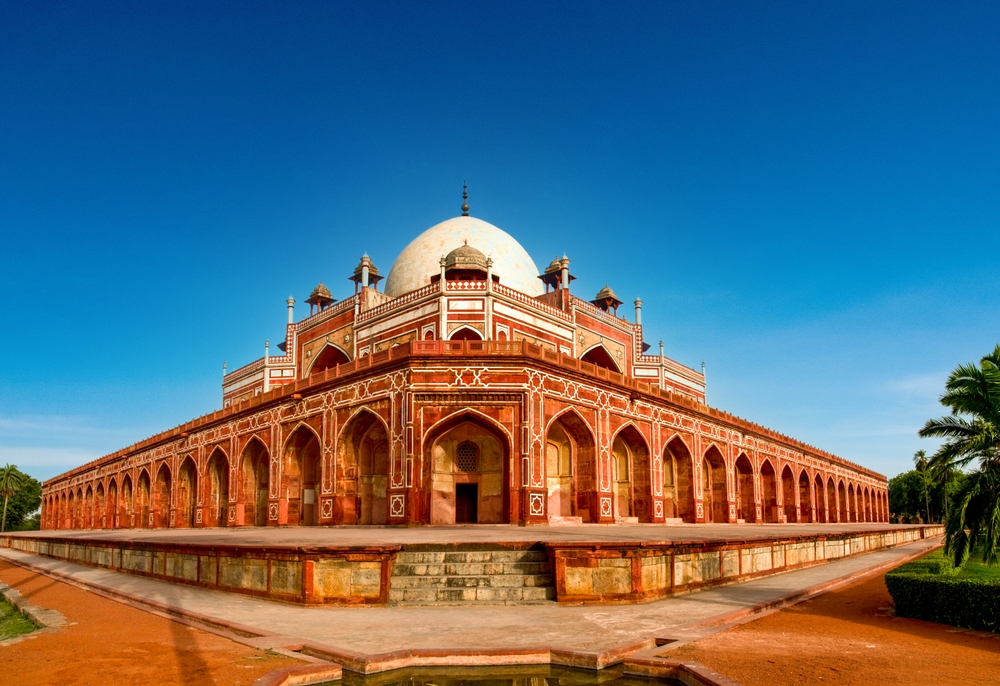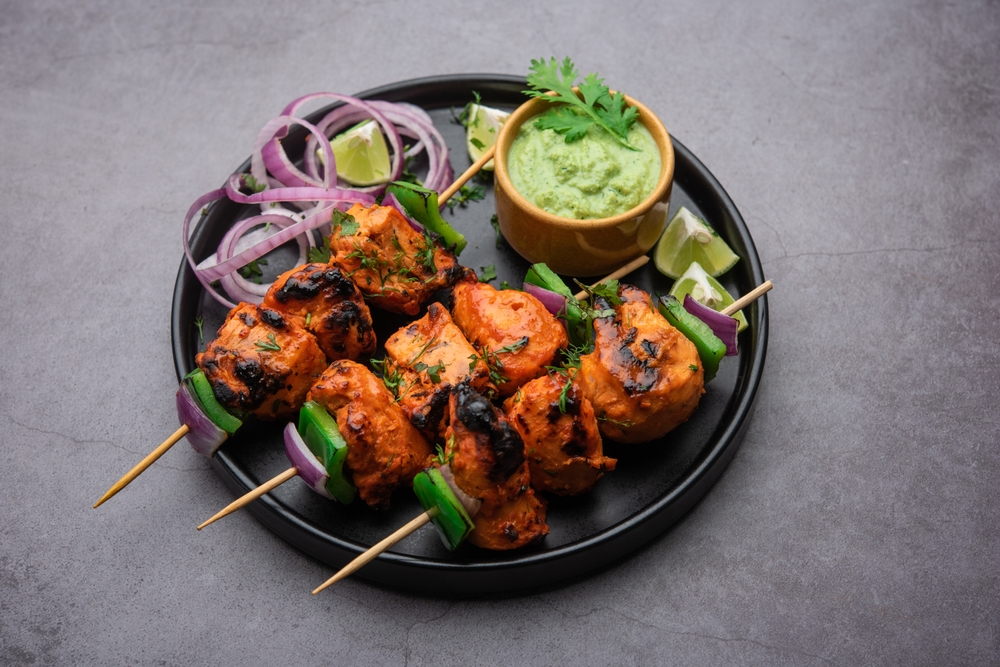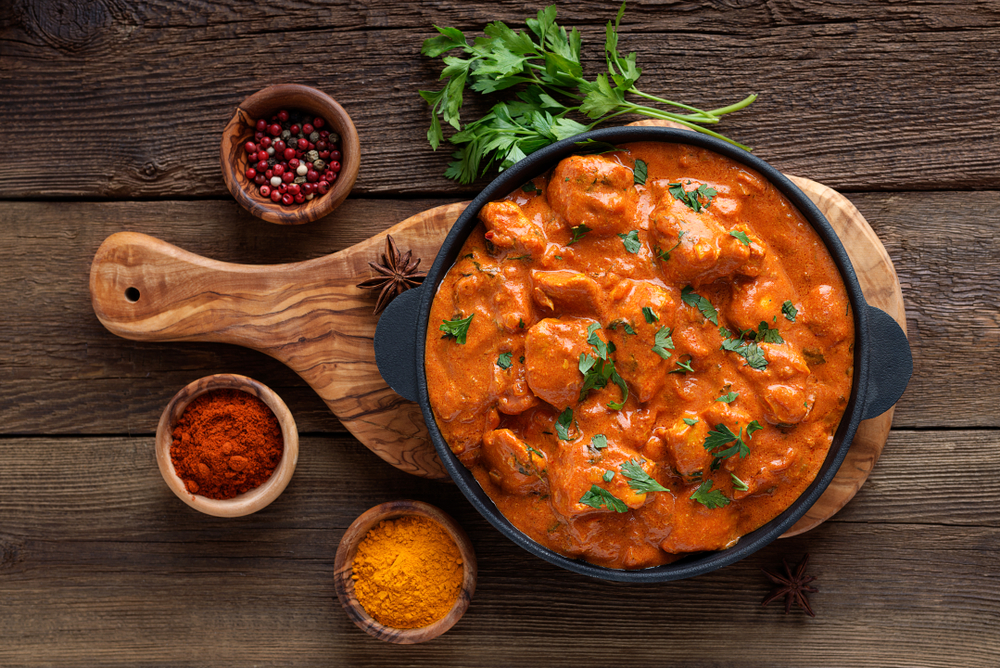A guide to Indian cuisine
There’s a moment in every journey when the food tells you more about a place than words ever could. India is one of those places. It isn’t just a country; it’s a sensory onslaught—an explosion of color, sound, and scent, where the air is thick with the smoke of roadside grills, the clatter of woks hitting flames, and the slow churn of masala-laden gravies simmering in copper pots. This is a land where food is history, culture, and identity, all served on a steel plate with a stack of fresh, blistered naan.
Curry, in its countless forms, is the backbone of Indian cuisine. Whether thick and creamy or light and brothy, it is a dish that reflects the diversity of India itself. With each region crafting its own interpretation, from the coconut-laden curries of Kerala to the tomato-based gravies of Punjab, curry is more than just a meal—it is an experience.
There is no single Indian curry but rather a realm of them, each built upon a foundation of spices that have been meticulously balanced for centuries. The subtle heat of cumin, the floral notes of cardamom, the depth of coriander, and the warmth of garam masala all work together to create something greater than the sum of its parts. Every bite tells a different story, a testament to the generations that have perfected the craft of blending spices with precision and intuition.
The Charred and the Slow-Cooked: India’s Love Affair with the Tandoor
The tandoor is a relic of India’s Mughal past, a clay oven that has shaped the country’s cuisine for centuries. Walk into any Punjabi dhaba along the Grand Trunk Road, and you’ll find skewers of marinated chicken lowered into its glowing depths, the meat sizzling as it absorbs the smoky kiss of the fire. Tandoori chicken is more than a dish—it’s a ritual. The yogurt marinade, stained red from Kashmiri chili, penetrates the meat overnight, making it tender. The result is a bird that emerges from the oven painted in charred streaks, its edges crisp, its center juicy. You tear into it with your hands, the way it’s meant to be eaten, dipping each bite into a side of green chutney bright with cilantro, mint, and a hit of lime.
The tandoor doesn’t stop at meat. It gives us naan, its surface blistered from the heat, slightly chewy but light. The best ones are slathered in ghee, still hot, served alongside slow-cooked curries designed to be mopped up, bite by bite. And that leads us to one of India’s most beloved dishes—Butter Chicken.
Butter Chicken: A Mistake Turned Masterpiece
Some of the best dishes in the world are born from accidents. Butter Chicken, or murgh makhani, is one of them. The story goes that in the 1950s, at the now-legendary Moti Mahal restaurant in Delhi, leftover tandoori chicken was tossed into a rich tomato gravy, finished with a swirl of cream and a dollop of butter. It was meant to salvage the day-old meat, but what emerged was an instant classic—tender, smoky chicken swathed in a sauce so good it feels almost indulgent. The dish took over North India first, then the world.
There’s an art to eating Butter Chicken. You don’t just take a fork to it. You rip a piece of naan, scoop up the sauce, and let the flavors unfold—sweetness from the tomatoes, warmth from the garam masala, heat from the chili, all rounded out by the touch of butter.
The Art of Indian Hospitality
Eating in India isn’t a passive experience—it’s an act of belonging. You don’t just ‘grab a meal’ here. You sit, you share, you pass plates, you eat with your hands, you drink lassi so thick it barely moves through the straw. In homes, guests are fed until they can barely move, because refusing a second helping is almost an insult. Whether it’s a festival feast where banana leaves are piled high with regional delicacies, or a humble roadside meal of dal and chapati, the principle is the same: come hungry, leave satisfied.
Sweet Endings and New Beginnings
No Indian meal is complete without something sweet. Gulab jamun, those deep-fried dumplings soaked in saffron and cardamom-infused syrup, are tempting. There’s jalebi, bright orange spirals of sugar-soaked crunch, best eaten fresh from a street vendor’s sizzling oil. And then there’s kulfi, denser and creamier than ice cream, flavored with pistachios, rose, or mango, served on a stick or in a clay cup. It’s the perfect counterpoint to the spice-laden meal that came before.
As you travel through India, the food tells you where you are. The coconut-scented seafood stews of Kerala couldn’t be further from the mustard-oil-infused curries of Bengal. The chaats of Mumbai—crisp, tangy, drenched in tamarind and yogurt—are a world away from the thick, ghee-rich dishes of Rajasthan. But the beauty of Indian cuisine isn’t just in its diversity; it’s in its ability to comfort, to surprise, to transport you through time and tradition.
A Journey Through India’s Streets and Kitchens
There’s something raw and honest about eating your way through India. It’s not just the food—it’s the chaos, the history, the people who have been making the same dish for generations with a kind of quiet mastery. Each meal is an invitation to sit down, slow down, and taste centuries of tradition, migration, and reinvention.
And if you really want to understand Indian cuisine, you don’t just wander into the first place that looks good. You follow the scent of charred tandoori wafting through the alleyways, you duck into backstreet kitchens, you let someone who knows the city take you deeper. That’s where A Chef’s Tour comes in.
A Chef’s Tour: Exploring India One Bite at a Time
In Kolkata, the tour starts at sundown, when the heat of the day fades and the streets fill with the scent of slow-cooked mutton kosha, sizzling prawn cutlets, and crisp, golden pani puris. You wind through Sovabazar and Shyambazar, neighborhoods steeped in history and intellectual debate, where revolutionaries were born and independence movements once stirred.
In Delhi, the tour dives straight into the heart of Old Town. It’s a sensory overload—the sharp tang of spice markets, the thrum of cycle rickshaws, the scent of buttery paneer tikka masala mingling with frying jalebis dripping in syrup. You eat, you weave through ancient alleyways, you step into a massive Sikh temple where volunteers cook meals for thousands daily. You taste a Mughal dessert made from delicate vermicelli noodles, and just when you think you can’t eat anymore, a street vendor hands you a paan—betel leaf packed with dried fruits and syrups.
Food in India isn’t just about sustenance—it’s a story told over spice-laden bowls and smoke-blackened grills. It’s a reminder that the best meals aren’t just eaten; they’re experienced, felt, and remembered long after the last bite









